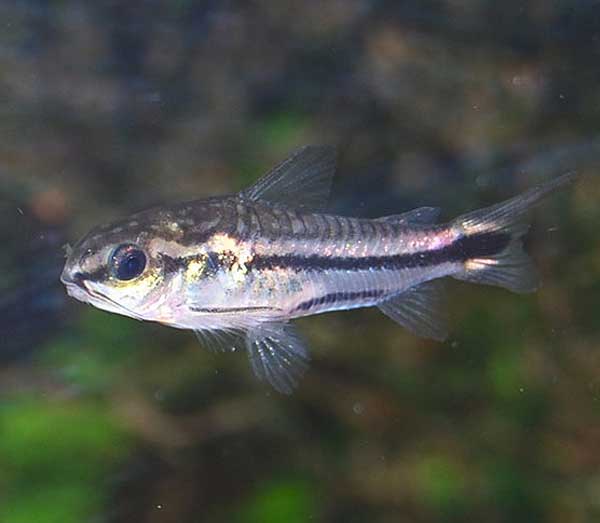Corydoras pygmaeus (*) Superregnum: Eukaryota The pygmy corydoras or pygmy catfish, Corydoras pygmaeus, is a tropical and freshwater fish belonging to the Corydoradinae sub-family of the Callichthyidae family. It originates in inland waters in South America, and is found in the Madeira River basin in Brazil. It was originally described by J. Knaack in 1966. The fish will grow in length up to 0.75 inches (2.1 centimeters) with females being larger than the males. It lives in a tropical climate in water with a 6.0 - 8.0 pH, a water hardness of 2 - 25 dGH, and a temperature range of 72 - 79°F (22 - 26°C). It feeds on worms, benthic crustaceans, insects, and plant matter. It lays eggs in dense vegetation and adults do not guard the eggs. The female holds 2-4 eggs between her pelvic fins, where the male fertilizes them for about 30 seconds. Only then does the female swim to a suitable spot, where she attaches the very sticky eggs. The pair repeats this process until about 100 eggs have been fertilized and attached. Pygmy corydoras are of commercial importance in the aquarium trade industry. They are kept in fishtanks, doing well in communities. They are peaceful fish and like to live in groups of at least four, and will also behave much more naturally in these larger groups. Unlike the larger, more common Corydoras, they often swim in a shoal around mid water regions, as well as the lower regions of the tank. References * Froese, Rainer, and Daniel Pauly, eds. (2006). "Corydoras pygmaeus" in FishBase. March 2006 version.
Source: Wikipedia, Wikispecies: All text is available under the terms of the GNU Free Documentation License |
|

